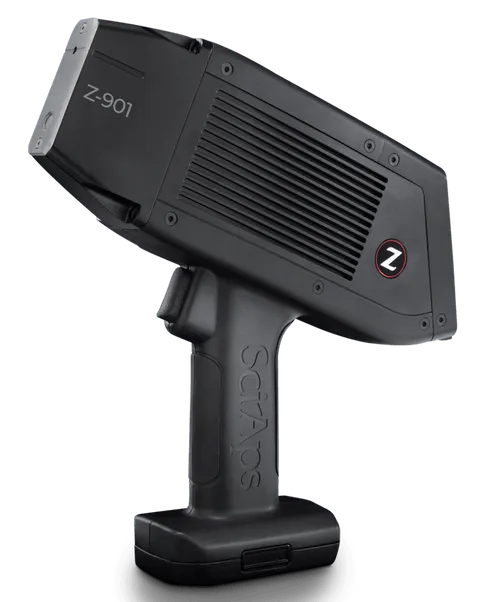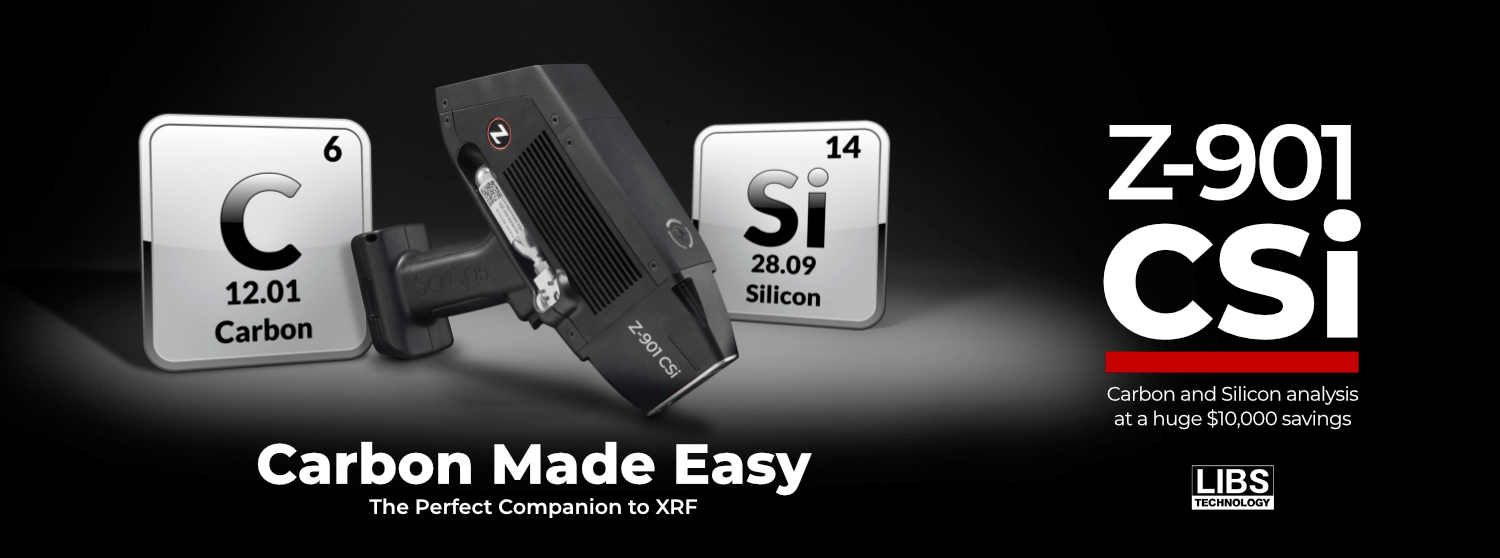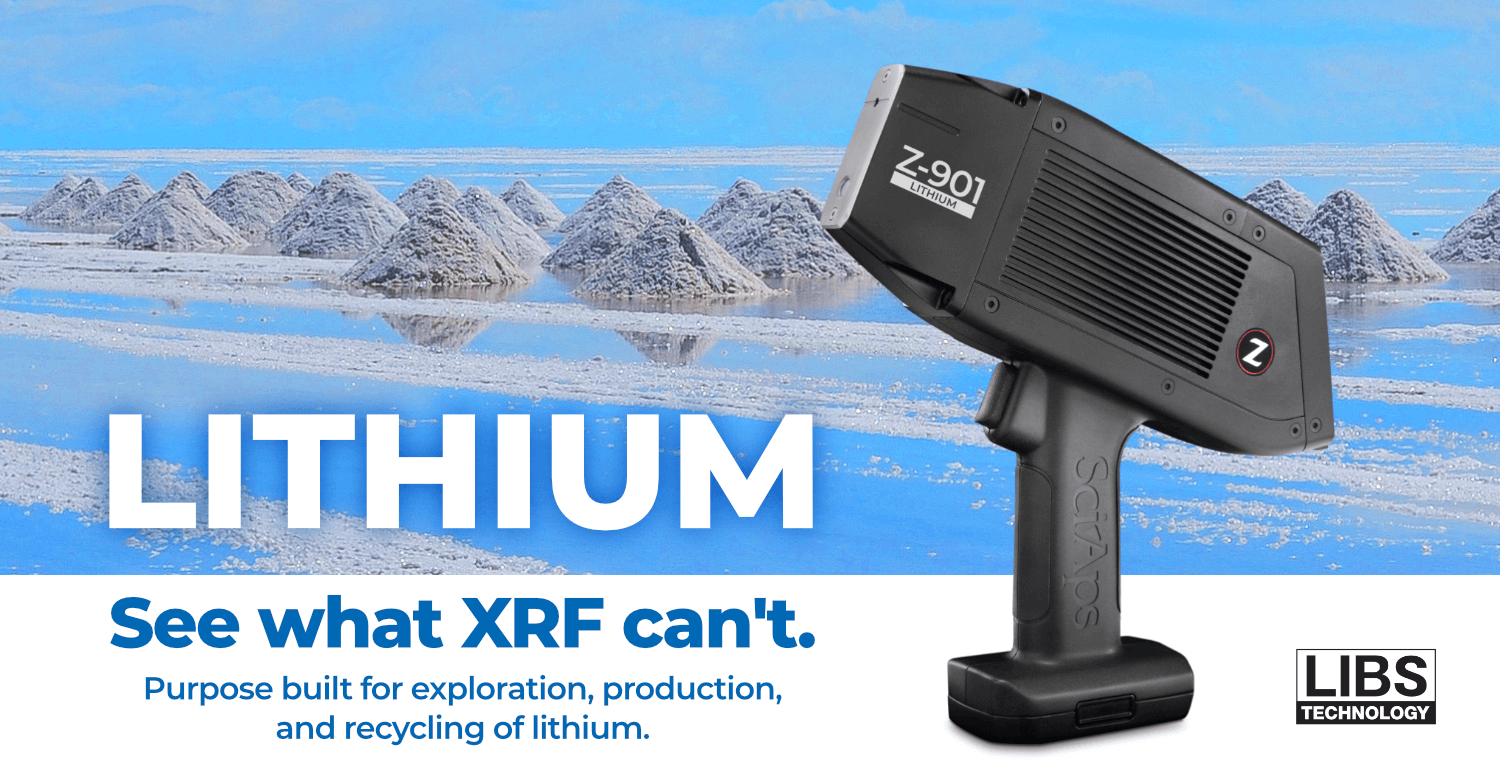
Z-901 LIBS Analyzer
The Z-901 features an all-new ergonomic design, a 0.5 lb. weight reduction down to about 3.5 lbs. (1.6 kg), improved heat dissipation, and completely updated software and processing electronics.
The Z-901 also leads the way featuring the first-ever “dual burn” technology. Users can test with the 901 either using an “air burn” method or using argon-purge for applications requiring higher precision and lower limits of detection.
A single spectrometer to covers the wavelength range of 200 – 440 nm. The instrument is factory calibrated for a suite of 15-20 elements, depending on application. Or operators may use the accompanying Profile Builder software package to customize to specific elements, their own calibration standards, and spectral processing. The Z-901 can be set up to measure the emissions of any element except Li, Na, H, C, N, O, Cl, Br, F, Ce, Rb, S. Common factory-calibrated Z-901 applications include alloy, mining and environmental analysis, typically for beryllium in soil.

Z-901 Series LIBS Analyzers

Factory calibrations do not include every element, but are provided for a set 15-20 elements depending on the application. Elements exclude unstable and radioactive elements. Detection limits vary greatly by element and sample type.
Alloy Analysis
SciAps offers the only LIBS-based alloy analyzer operable in a “dual burn” test setup. Just choose your app.
Alloy: Argon-purge for high precision and improved detection limits. Many customers use argon-purge to analyze and sell mill-ready aluminum scrap. Quantify low ppm levels of beryllium and boron.
QuickSort: Air-burn for rapid material sorting or grade identification.

The Z-901 for alloy analysis measures 15-20 elements in 7 common alloy bases, including aluminum, stainless, iron, copper, titanium, nickel and cobalt bases. Other bases may be added for a small fee, or users may add their own calibrations.
Need to measure lithium in alloys? Use Z-902, with extended range to 620 nm to measure Li emission.
Need to measure carbon in steels and stainless—including verifying L- and H-grade stainless? Use SciAps Z-902 Carbon, in use globally for measuring carbon and other elements in steels, stainless and nickel alloys.
Already own handheld XRF—and only need to add carbon measurements? Use Z-901 CSi, the ultra-compact analyzer that measures C and Si in steels, stainless.

Why the CSI?
Many operators own one or more XRFs for PMI/NDT. It’s their preferred tool for high temp alloys, and for elements contributing to carbon equivalents (CE), residuals, and stainless steel grades: V, Mn, Cr, Ni, Cu, Nb, Mo. However, XRF does not measure carbon and therefore no carbon equivalents, no separation of L- and H-grade stainless, nor can you use the more forgiving low RE formula (Ni + Cu) < 0.15%. The CSi is the perfect tool for operators who own XRF and need the occasional carbon measurement. It delivers fast, reliable carbon results to complement XRF tests, at a lower cost than the full LIBS system for carbon plus alloys. And SciAps cloud-driven data merging and report generation bring it all together in one report.
The CSi shows multiple carbon and silicon measurements, and the average. Meets multi-test averaging protocols required by some refineries and pipeline operators.
SciAps breakthrough LIBS technology is now widely accepted for carbon testing.
It’s included in API 578 2nd Edition, it’s accepted at most every major refinery, and in use worldwide by fabricators, pipeline owner/operators, power plants and other users of carbon steels and L- and H-grade stainless.
The world`s only handheld that analyzes lithium in soils, ores and rocks.
In use globally for lithium exploration projects, with no travel restrictions or licensing headaches..
Exacting elemental analysis
Factory calibrated for lithium in pegmatite, clays, and mica-schists, including relevant base elements in the 380 – 680 nm range.
Microanalysis capability with 100 um laser spot size. On-board Y stage for rastering laser to discrete locations for targeted analysis or averaging.
SciAps also offers the Z-903, containing a third spectrometer to extend the analytical range down to 190 nm for users testing brines for other elements, including boron, magnesium, calcium, and potassium.
Engineered for field and lab
SciAps LIBS series handheld analyzers, at just 3.87 lbs. (1.75 kg) with battery, have an internal camera for precise targeting of analysis locations; a macro camera for photo-documentation of samples, reading bar codes and QR codes; a patented “sample sensor” that allows Class 1 operation (subject to LSO approval); high-resolution, rear-facing display for easy viewing; rugged metal body for maximum durability; a narrow snout for difficult-to-access test locations; and user-replaceable argon that provides hundreds of tests at pennies per test. Pair with Profile Builder software for PC or tablet and achieve full bench top functionality.
Intuitive operations
Android operating system and app-based software assure quality testing by every operator. Built-in Wi-Fi and Bluetooth, with GPS capability, allow users to print, email, and connect to virtually any information management system for real-time, full-featured reporting. Automatically merge XRF and LIBS tests with SciAps Cloud Services. Easily manage operations from anywhere.



